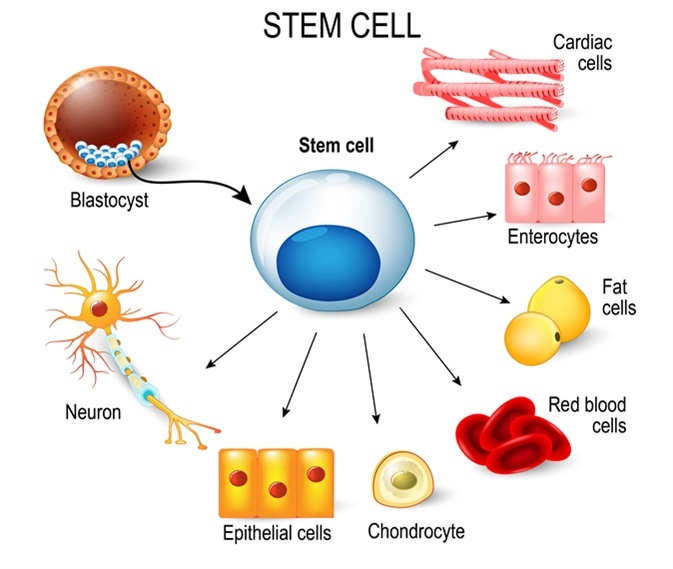Table of Contents
The writers note obstacles that remain, including increasing the engraftment success and cell survival. Because the ISCI and Miller School are leaders around, the writers likewise emphasize the demand to systematize meanings and outcomes procedures in the field. "The Hare Laboratory continues to be at the center of pioneering new treatments in this crucial clinical domain name.
Now we are discovering exactly how to harness such stem cells to aid patients heal their very own damaged hearts."The research is directed by the Cedars-Sinai Heart Institute, with the collaboration of the Johns Hopkins University, where Dr. Marbn functioned prior to joining Cedars-Sinai in 2007. The 24 clients taking part in the study have hearts that were damaged and marked by cardiac arrest.

It takes about 4 weeks for the cells to multiply to numbers adequate for therapeutic use, approximately 10 to 25 million. In the third and last action, the now-multiplied stem cells are reintroduced into the individual's coronary arteries during a 2nd catheter treatment. All clients in the research had to have knowledgeable cardiac arrest within four weeks before enrolling in the research job.
Later on this summertime, it is anticipated that 12 more patients will certainly go through procedures to receive 25 million stem cells, while six extra clients will certainly be monitored as controls. The initial client, Kenneth Milles, a 39-year-old controller for a tiny building and construction company in the San Fernando Valley, experienced a cardiovascular disease on May 10 because of a 99 percent blockage in the left anterior descending artery, a significant artery of the heart.
The procedure to grow the cardiac-derived stem cells associated with the study was established by Marbn when he got on the faculty of Johns Hopkins University. The college has actually applied for a patent on that copyright, and has actually accredited it to a company in which Dr. Marbn has a financial interest.
All financing was stemmed from the National Institutes of Health And Wellness, the Donald W. Reynolds Foundation and Cedars-Sinai Medical Center. Marbn holds The Mark Siegel Household Structure Endowed Chair and Supervisor of the Heart Institute.
Top clinics for stem cell therapy for Heart Failure
Cardiac arrest is an intense or chronic condition that impacts millions of individuals worldwide. One of the most commonly accepted techniques of treatment normally consist of signs and symptom administration and medicine taken for life, so the problem brought on by the condition is heavy. Stem cell treatment for cardiac arrest has actually emerged as a new means to deal with and handle the core of the illness.
Stem cell treatment can aid to reduce symptoms and enhance the heart's pumping capability. This treatment uses the capability of stem cells to self-regenerate and self-heal. Following the admission of stem cell injections for congestive heart failing, numerous systems enter play: Stem cells for cardiac arrest advertise the formation of specialized heart muscle mass cells and regrow damaged tissue, enhancing the heart's pumping ability.
There are several kinds of stem cell therapy for cardiac arrest that have gotten acceptance following a large amount of study. These are sorts of grown-up stem cells that are obtained from bone marrow, fat tissue, and skin cells. They have cell regenerative and anti-inflammatory residential properties. These are one of the most typical and well-researched sorts of stem cells.
These are gotten from embryos and have the pluripotent potential to change right into any kind of cells, including cardiac ones. The major problem with these cells is that, as they are taken from embryos, they have numerous ethical and lawful limitations and are only used in certain situations. for the reasons stated above.
Regenerative support for Atherosclerosis that uses stem cells
These cells originate in the heart and are appropriate to cardiac repair service. Please, call our clinical consultant to review your wellness problem with a specialist in regenerative medicine. You can also leave your call information for a callback. It is free and private. Clinical Consultant, Swiss Medica medical professional The application and therapy of stem cell treatment includes five steps: People start with an online consultation with our medical advisor and are after that reviewed by a cardiologist, who will certainly obtain the required clinical background, do blood tests, and demand imaging research studies to establish whether stem cell treatment for cardiac arrest is a viable alternative.
We provide stem cells via painless stem cell injections for coronary infarction. A very trained physician will infuse processed stem cells into the blood stream; the whole treatment takes less than an hour. After finishing the heart disease stem cell treatment procedures, our people will certainly be monitored for any complications and results.
Table of Contents
Latest Posts
Regenerative injections targeting High Blood Pressure — what to expect
Regenerative injections targeting Arrhythmias with minimal downtime
What to know about using stem cells to support Heart Failure
Navigation
Latest Posts
Regenerative injections targeting High Blood Pressure — what to expect
Regenerative injections targeting Arrhythmias with minimal downtime
What to know about using stem cells to support Heart Failure